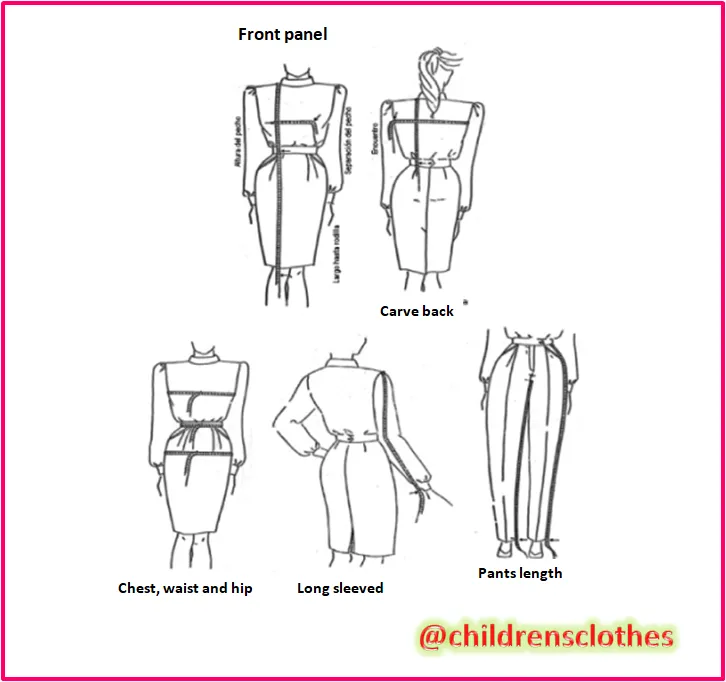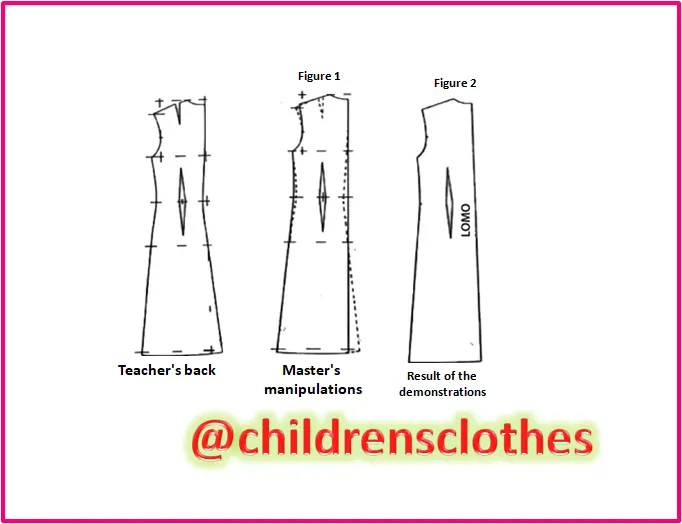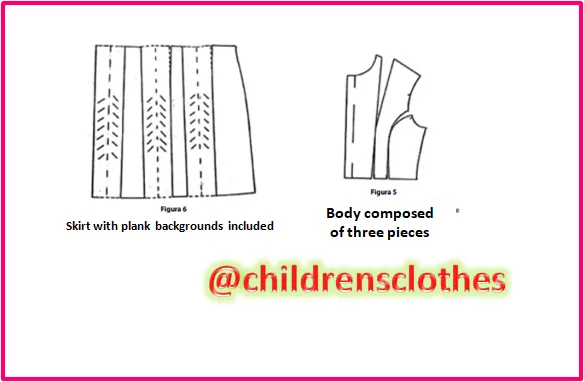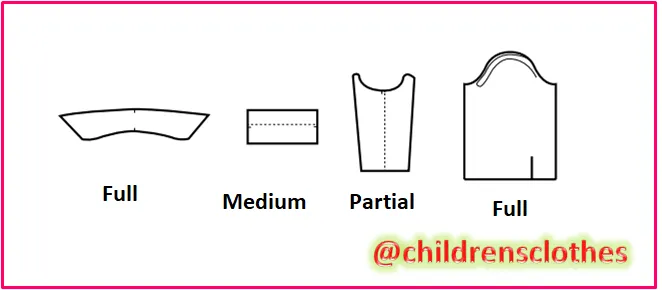The patronage
The pattern is the system of organization of the construction of a garment, which consists of breaking down by separate pieces the different areas of the human body to be dressed, in a way that each piece of cloth is adapted to that area and that the union of all the pieces in a predetermined order produces as a result a garment model that corresponds to the design of the proposed model.
Each of these pieces, drawn on paper and cut into paper or cardboard, are called the pattern of the piece and the set of all of them is called model pattern. Each piece and the ordered set of all of them can be copied in series and reproduced to scale.
In the garment industry there are pattern books that contain the basic patterns or masters of most standard garments: men's, men's, skirts, shirts, etc., which are useful in professional workshops for the structure basic model pattern. However, in addition to the frequent circumstance of having to make the pattern of a garment for which there is no previous teacher, we must know the technique of pattern making, both to correctly interpret the teachers and to create our base patterns and, for Of course, know the technique of scaling to use the patterns created by us.
Development of a cylinder The human body is an irregular geometric body, with obvious differences in proportions and shapes from one individual to another, but with enough constants to establish certain common features among them. The geometric body similar to the human body is a cylinder and, therefore, the rectangle corresponding to the development of this cylinder could be the rectangle that enveloped the human body, with the modifications
indispensable to adapt it to the neck, arms and legs. And this is the fundamental, basic idea to structure our clothing. If we put that rectangle on the pattern board, we will have the surface on which to draw the base pattern of a garment, defining on it specific data on length, breadth and shape.
Measures
Fundamental principles
The human body is composed of two symmetrical parts: right and left. This is the first standard to be taken into account for the development of the cylinder; that is, the rectangle in which the patterns are to be drawn is the one corresponding to 1/2 rectangle of the total cylinder. This half rectangle extends from the center of the back to the center of the front, along the entire body. Therefore, there are two main groups of measures:
The longitudinal ones, which are tall or long ones;
The contour or width (considered by halves, since we build only one half of the pattern with respect to the whole body to wear).
The contour measurements, in the development of this cylinder are: chest, waist and hip. We consider their semi-measures as contour measurements, taking into account that one of the sides of the rectangle refers to the center of the back (CE) and the opposite refers to the center of the front (CD).
The longitudinal measurements are based on the height of the bodies, the lengths of the garments and some proportional measures. Let's see the measures of the human body that must be taken into account to dress it and that we must reflect on the pattern of each piece and the model.


Measures of lady:
Height: measure of the total height of the lady, being barefoot.
Chest height: from the base of the neck, in conjunction with the shoulder, to the tip of the nipple.
Front stroke: from the initial point of the previous measurement, passing through the apex of the chest, to the waist.
Skirt length: from the waist (the final point of the previous measurement) to the desired length of skirt.
Breast separation: half the distance between the vertices of the two breasts.
Back length: from the base of the neck in conjunction with the shoulder to the waist.
Encounter: from the column to the level of the armpit until finding the arm (it is half the total back width).
Chest: measurement taken under the armpits, with the arms fallen and at rest and with normal breathing, passing the tape through the apex of both breasts (it is the semiperimeter of the thorax, including the apexes of the breasts).
Waist: semiperimeter of the waist, in its shortest measure.
Hip: semiperimeter of the hip, taken by the widest.
Sleeve length: from the outer point of the shoulder, passing the tape through the front part of the arm, when it is folded, up to the wrist.
Length of pants: from the waist and on the side to the foot, lower part of the instep.
Trouser shot: from the crotch to the foot (to the end point of the previous measurement).

Knight measures
Height: measure of total height of the knight, being barefoot.
Length of the waist: measured by the spine, from the seventh neck to the waist.
Encounter: from the column to the level of the armpit until finding the arm (it is half the total back width).
Chest: measurement taken under the armpits, with the arms fallen and at rest and with normal breathing: it is the thorax semiperimeter.
Waist: semiperimeter of the waist, in its shortest measure.
Hip: semiperimeter of the hip, taken by the widest.
Sleeve length: from the outer point of the shoulder, passing the tape through the front part of the arm, when it is folded, up to the wrist. Length of pants: from the waist and on the side to the foot, lower part of the instep.
Trouser shot: from the crotch to the foot (to the end point of the previous measurement).

The model
The design of the garment should appear with front and back views. In view of the design, the pattern maker will choose the base or master pattern from which he can start, according to the type of garment, the defined style or line, appropriate amplitudes, etc.
Prior to the creation of a master or base pattern, it is necessary to define the style of the garment, the desired amplitudes and the measures to be used. Be part of this base pattern or teacher to make other teachers and the pattern or patterns of the corresponding model.
Once the teacher has been chosen, the following steps have to be followed:
1.- The chosen teacher or the base pattern is copied in pattern material and the data that will be needed later for the final patterns are incorporated. This copy contains the construction lines of the garment.
2.- On this drawing begins the true work of pattern making: the cuts that the design requires must be outlined and placed.
3.- Decide what will be the notch and flight of the model, to apply it according to the comparison with the teacher and with the measurements and according to the design instructions.


Aplomos
Called aplomb any mark or point of reference in the pattern. It is information that must be included in the pattern and that is transferred to the fabrics that are cut. They serve to recognize each
piece and relate it to the others in each point of coincidence, adjusting paths in flat or loose seams, beginning and end of gathers, edges of tables, folds, ends of pliers, size of
widening or stitching different from normal, point of support of another component, etc.
There are two types of aplomos:
- If these points or marks are inside the piece, they are called drills.
- If they are in the contour of the piece, they are called pickets.
The drills
The transfer of the drill from the patterns to the fabrics must be done always taking into account the characteristics of the fabric, and
by two procedures:
- by means of a conical needle the threads of the fabric are moved away, placed
under the pattern; that is to say: materializing the drill in the fabric, but without breaking the threads. - by means of a cutter that does break the fabric when making the drill, but that, by means of heat or another agent, finishes off the edges of the hole without leaving the threads loose.
The drill will have 2 to 4 mm in diameter. In the fine and medium-fine fabrics, in the flat-textured and tight-knit fabrics the first procedure should be used; valid, also for the garment with both lining and he. The second procedure can be done on any fabric, but provided that the garment has a lining on that drilled piece.
The pickets The transfer of the picket from the pattern to the fabric it requires less complication, since it is marked on the outline of the pattern and will not physically affect the piece of fabric. Placing the pattern on top of the fabric, a cut is made on the fabric at each picket mark perpendicular to the contour segment. high heel shoes The seam line is parallel to the pattern and there may be a seam line of different components that have to be assembled but their length varies from one to another; in that case they have to be equal through heels.

Contact Data.
In addition we will have channels available for questions, suggestions and personalized attention through email and discord.
vastgaocasademodas@hotmail.com
xioreromero@gmail.com or chat with @childrensclothes#7556 on our Discord
You can also enjoy updated information on events and models from our Aurora collection, follow the Instagram account: Vastagocasademodas.
We accept payments in Cryptocurrencies Steem, Sbd.
Why support @childrensclothes?
By supporting this productive social program will be contributing to a solidarity project for children in Venezuela who have no shelter, food and medicine, will be strengthening the productive apparatus and the ability to generate jobs to mothers head of households, will also contribute to maximize the level educational with training for entrepreneurs in various trends, financial, commercial, business, personalized courses, will also be promoting the inclusion of special children Autism, Down syndrome, and children with cancer that occupy a special place. Preventive measures to care for the environment The use of the blockchain will be established as a technology with purpose, and to empower leaders in action to form their own companies, in a self-sustaining model through efficient resource management.
"If society improves, it will improve the performance of the company. You can not be happy alone, I can not do well in the middle of a failed society "
FASHION WITH PURPOSE: THE BEST COAT, IT'S LOVE
YEAR 2019. The goal is to enjoy childhood in all its colors, aromas and flavors.
We thank our collaborators:
@fundition,@adollaraday, @pennsif


